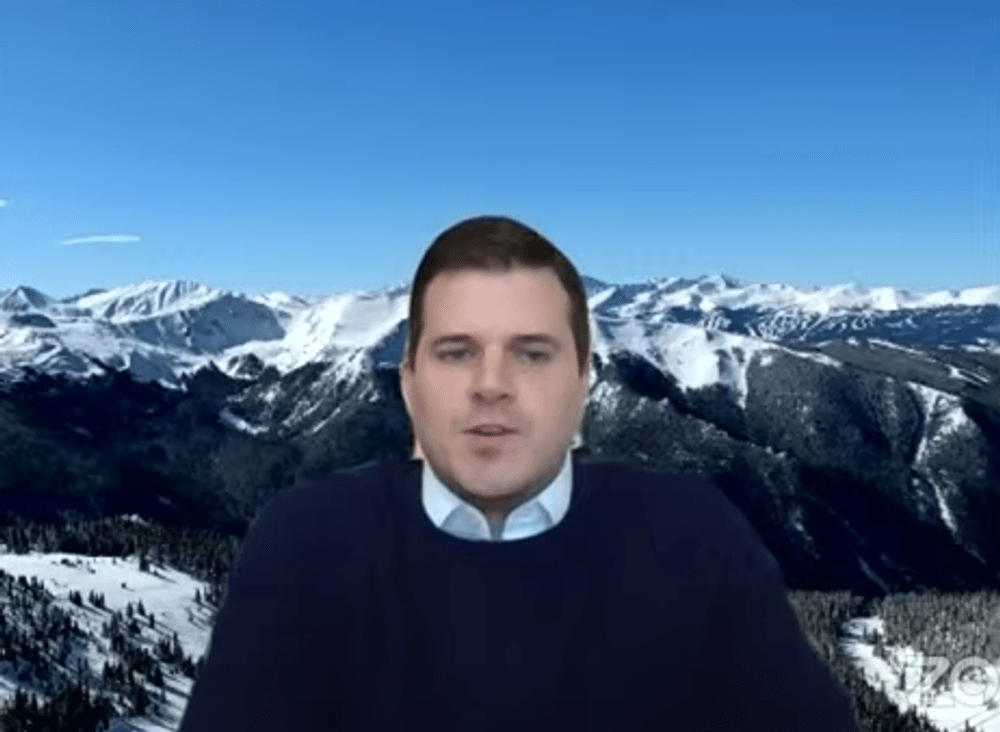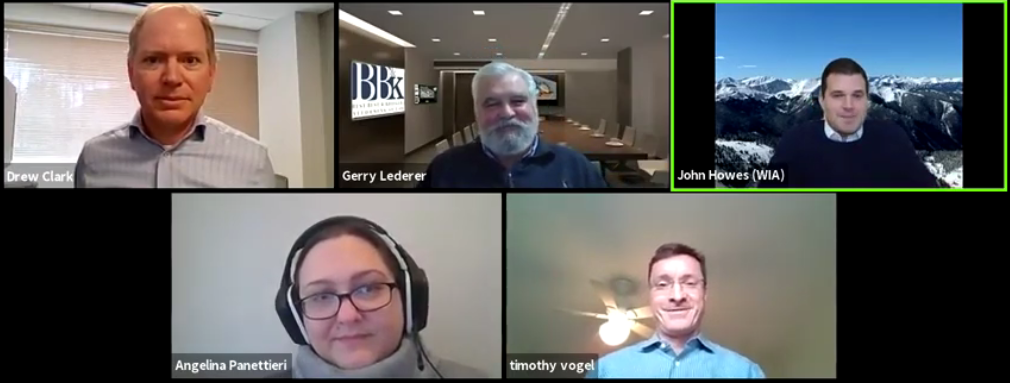In A Debate Over Municipal Rights-Of-Way, Industry and Public Representatives Attempt to Find A Path Forward
December 15, 2020 — In a spirited debate about one of the central policy issues surrounding the deployment of 5G and small cell deployment, Wednesday’s Broadband Breakfast Live Online featured both municipalities and wireless industry officials each expressing concerns and grievances. To realize the
Jericho Casper

WASHINGTON, December 15, 2020 — In a spirited debate about one of the central policy issues surrounding the deployment of 5G and small cell deployment, Wednesday’s Broadband Breakfast Live Online featured both municipalities and wireless industry officials each expressing concerns and grievances.
To realize the promise of 5G, far more base stations, or wireless infrastructure facilities, will be necessary to deploy due to limitations associated with mid-band spectrum and faster promised throughput.
Representatives for the municipalities said that their rights-of-way aren’t being respected. Industrial officials said that cities were over-complicating the need for rapid deployment.
5G facilities and towers may not be as big as previous generations of wireless technology. Still, the need for far more facilities has already created tensions between municipalities and wireless providers over rights-of-way.
Earlier in his term as chairman, the current Federal Communications Commission under Ajit Pai issued a wireless infrastructure order that attempted to “remove regulatory barriers” that inhibit the deployment of 5G infrastructure.
The FCC also took action, prompted by a petition from the Wireless Industry Association, under Section 6409 of the 2012 Spectrum Act, to allow wireless service providers to collocate wireless infrastructure, or allow industry to add one or more antenna to pre-existing towers.
“The FCC has tilted the table too much in favor of industry and not enough for communities,” said Gerry Lederer, partner at the law firm Best Best & Krieger. “We’ll see whether a new FCC will level that table more.”
Cities claim that wireless providers are pushing too hard, too fast
Angelina Panettieri, legislative director of technology and communications at the National League of Cities, which represents more than 19,000 cities, towns, and villages across the U.S., said that she was working hard to overturn the FCC’s preemption order.
“I don’t think the issue is local governments not doing enough to speed processes,” said Panettieri, “this is a consequence of our collective failure as a nation to ensure we have adequate infrastructure and affordable access, which has ended up falling on local leaders.”

“At the same time, these communities are facing a faster and deeper cratering of local government funding than we’ve seen since the Great Depression. Many city halls are closed on Friday’s to save money,” she said. “Next year, without significant federal aid, there will be a hollowing out of the local public sector workforce, that will take a decade or more to recover from.”
“Cities and school districts have really moved mountains, shaken the change out of their couch cushions, and partnered with internet service providers to get devices and subsidized internet connections out to students and families,” said Panettieri.
She said that 5G is a tool and not a silver bullet, and that cities need to encourage fiber deeper into the neighborhoods as much as possible.
“We need to stop the fib that 5G is going to address the rural divide,” added Lederer. “If you don’t have fiber, you aren’t going to get 5G; 5G is not the near-term answer.”
Industry counters that speed is necessary to win the 5G deployment race
In response, industry representatives maintained that a speedy turnaround is necessary to win the race to 5G deployment against China.
John Howes, counsel of government affairs for the Wireless Infrastructure Association began his remarks by highlighting another recent FCC achievement: Kicking off the C-Band auction on December 8, generating $1.9 billion in proceeds in its first day. It is the FCC’s largest auction of midband spectrum to date, offering up 280 megahertz of important swaths of 5G spectrum in the 3.7-3.98 GigaHertz (GHz) band.
“The auction is critically important to furthering 5G connectivity across the U.S.” as it offers a relatively quick timeline for potential 5G deployments in the next few years, he said
Part of the effort, he said, involves collaboration. “We have to work with state and local government partners,” said Howes. “There is a race to 5G and it is critical we lead the way.”
To give a sense of the work required to roll out these advanced networks, Timothy Vogel, senior managing associate of general counsel for Verizon Wireless, detailed the company’s attempt to roll out networks around Phoenix.
“Just looking around Pheonix, we see Avondale, Scottsdale, and Paradise Valley — we see the 26 localities that surround Phoenix. To have to come up with different processes in each of the 26 — different fees [and] different rules slows down the process and drives capital to other areas.”
Finding a path to move forward with fiber and 5G deployment
“Certainly there are disagreements,” said moderator Drew Clark, editor and publisher of Broadband Breakfast, but “How can the process be improved? What are successful cities doing now?”
Vogel championed matching the needs of communities with the reality of business to align expectation and understanding, improve existing processes, and address stakeholders’ concerns.
Panettieri pushed back on the idea that the deployment process should be completely universalized, saying that it would likely not be achievable. She instead called for industry to embrace regional collaboration, as has worked with similar utilities and older technologies.
Pannettieri said cities that have thought proactively about street-scape, design, and digital equity are of the best positioned to manage 5G deployment. “Cities like San Jose, which have undergone serious planning around digital equity, know where the need is greatest and what is causing their digital divide — infrastructure, tech literacy, devices, or affordability,” she said.
In defense of maintaining cities’ aesthetics, Lederer accused the private sector of lying about the omnipresence of 5G wireless infrastructure equipment, saying “It would be nice if industry would tell the truth about size. Small cells are not ‘small’, stop going to state legislatures and city councils will small boxes and saying ‘this is a small cell’, and forgetting about the other 28 cubic feet that” come along with it.
In the end, the industry and the municipal representatives agreed that a nationalized approach to 5G deployment would not work.
“We’ll never get to the point where everyone is doing the same thing. People care about how their cities look, that’s why they want to live there,” said Panettieri, adding that it is “important to maintain the authority of the city,” as they have the potential to be good conveners.
The discussion is just one of six events in the event series, “A No-Nonsense Guide to 5G,” that is sponsored by Samsung Electronic America.

‘A No-Nonsense Guide to 5G’ sponsored by:

Events in “A No-Nonsense Guide to 5G” include:
- Wednesday, October 14, 2020, 12 Noon ET — “A No-Nonsense Guide to 5G: The Hype and the Reality of 5G”
- This opening panel will set the stage for Broadband Breakfast Live Online’s consideration of the policy, technology and practical questions around the 5G wireless standard. What is 5G, and why is there so much buzz about it? How much of an improvement is it over prior generations of wireless? In other words: What is real, and what is hype? How the issues of trusted partners, rights-of-way deployment, and spectrum policy interact? Where is 5G seeing early successes, and what are the stumbling blocks?”
- Wednesday, October 28, 2020, 12 Noon ET — “A No-Nonsense Guide to 5G: National Security and Trusted Partners”
- This panel will consider the global landscape for the 5G equipment ecosystem. It will consider issues in core networks, radio access networks and in handset equipment. How has the global landscape changed? Will 5G benefit from – or suffer because of – a new Cold War with China? How are American companies reacting to federal government initiatives for trusted partners? Where can the U.S. turn for solutions and alternatives to Chinese manufacturers?
- Wednesday, November 18, 2020, 12 Noon ET — “A No-Nonsense Guide to 5G: A Case Study of Transformative Apps in the Enterprise”
- 5G is seeing its first real successes in the enterprise marketplace. To glimpse the future more accurately, Broadband Breakfast Live Online will consider case studies of applications in enterprise environments. What technologies and processes bring 5G success to the business marketplace? What needs to happen to bring 5G successes to the consumer marketplace?
- Wednesday, December 9, 2020, 12 Noon ET — “A No-Nonsense Guide to 5G: Wireless Infrastructure, Municipal Rights-of-Way and the 5G Rural Fund”
- To realize the promise of 5G, far more base stations — wireless infrastructure facilities — will be necessary. 5G facilities and towers may not be as big as in previous generations of wireless technology. Still, the need for far more facilities has already created tensions with municipalities over rights-of-way. How can these conflicts be minimized? What are smart cities already doing to expedite wireless infrastructure deployment? Can the process be improved?
- Wednesday, January 13, 2021, 12 Noon ET — “A No-Nonsense Guide to 5G: The Adoption and Use of 5G Broadband”
- What are some of the likely drivers of 5G equipment and services? How have existing consumer use cases been received? What can we expect from 5G technology in 2021?
- Wednesday, February 10, 2021, 12 Noon ET — “A No-Nonsense Guide to 5G: Spectrum Policies to Advance Better Broadband”
- More than simply the next generation of wireless technology, 5G deployments make use of radio frequencies from an extremely wide range. For example, some 5G deployment are using mid-band spectrum between 3.4 GigaHertz (GHz) and 6 GHz. But 5G networks also promise tap into spectrum between 24 GHz and 100 GHz. It deploys these millimeter bands using network slicing and other advanced wireless tools. What new spectrum policies are necessary for 5G to flourish?
SUBSCRIBE to the Broadband Breakfast YouTube channel. That way, you will be notified when events go live. Watch on YouTube, Twitter and Facebook.
See a complete list of upcoming and past Broadband Breakfast Live Online events.











Member discussion